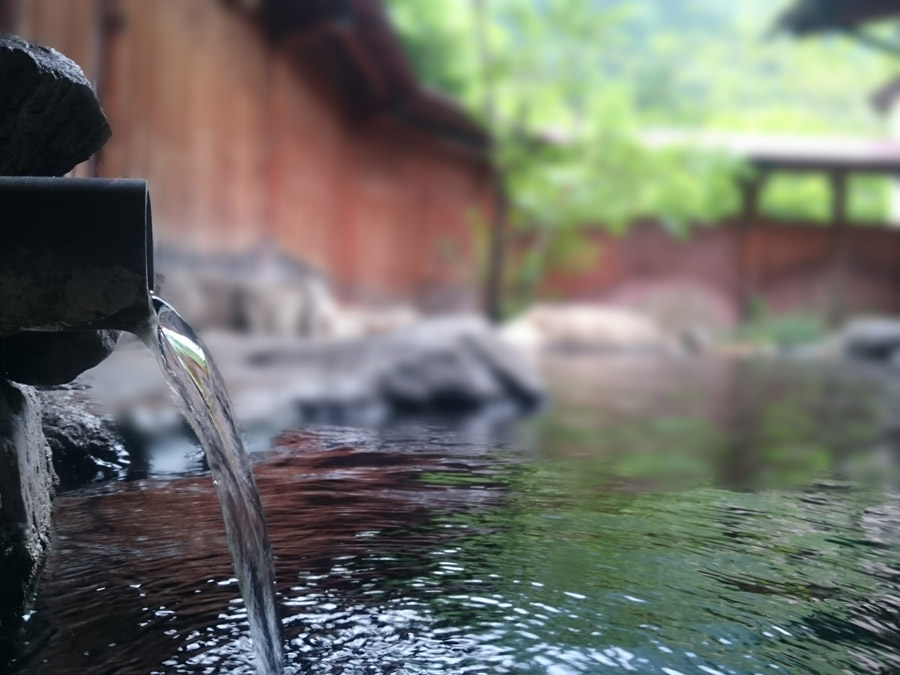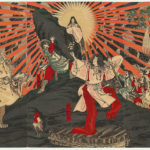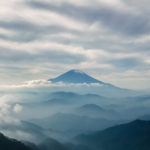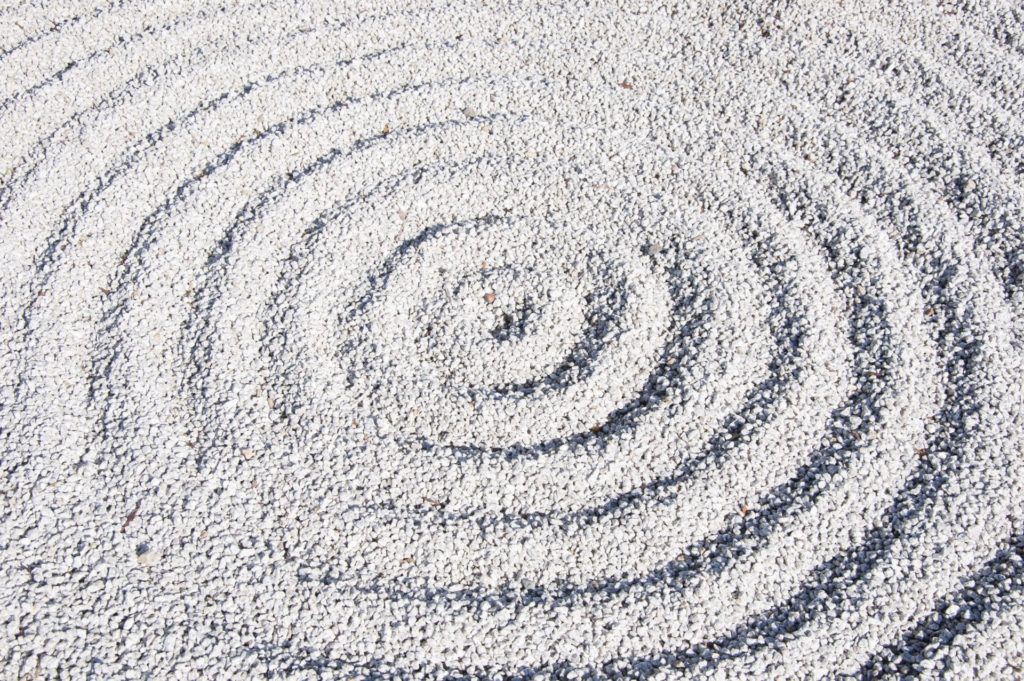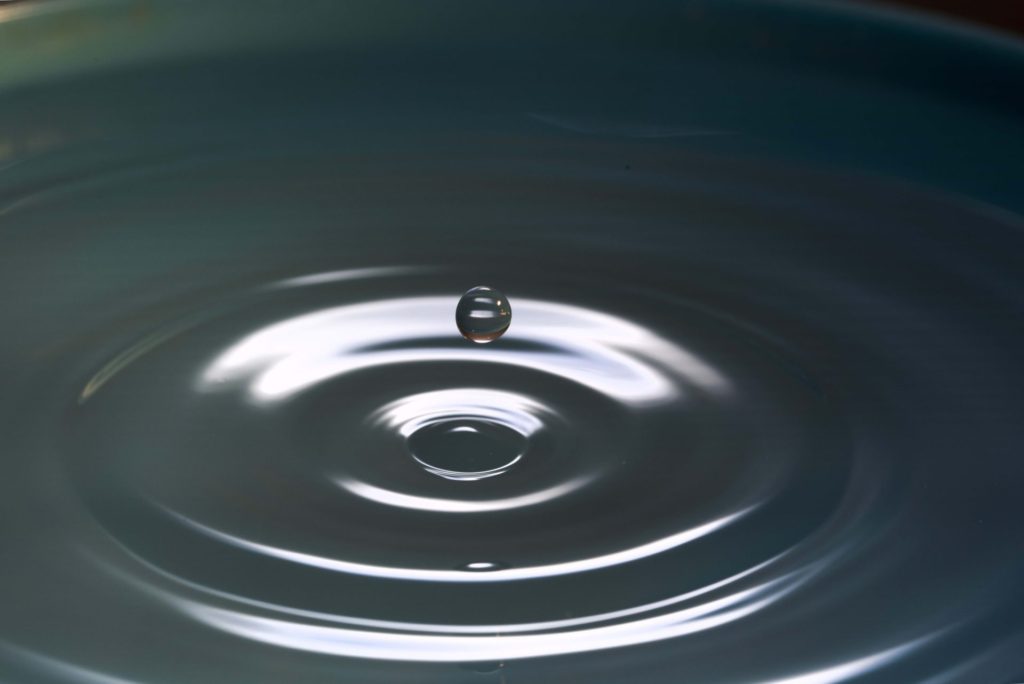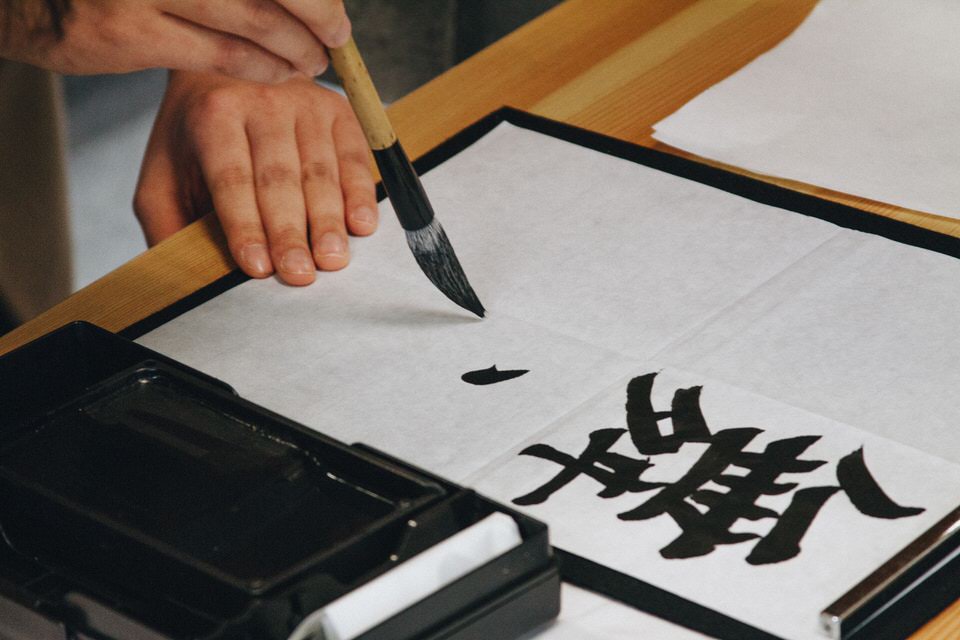Onsen culture is an essential part of Japanese culture. What is an onsen? Why are onsen so famous in Japan? Let's take a look.
What is an onsen?
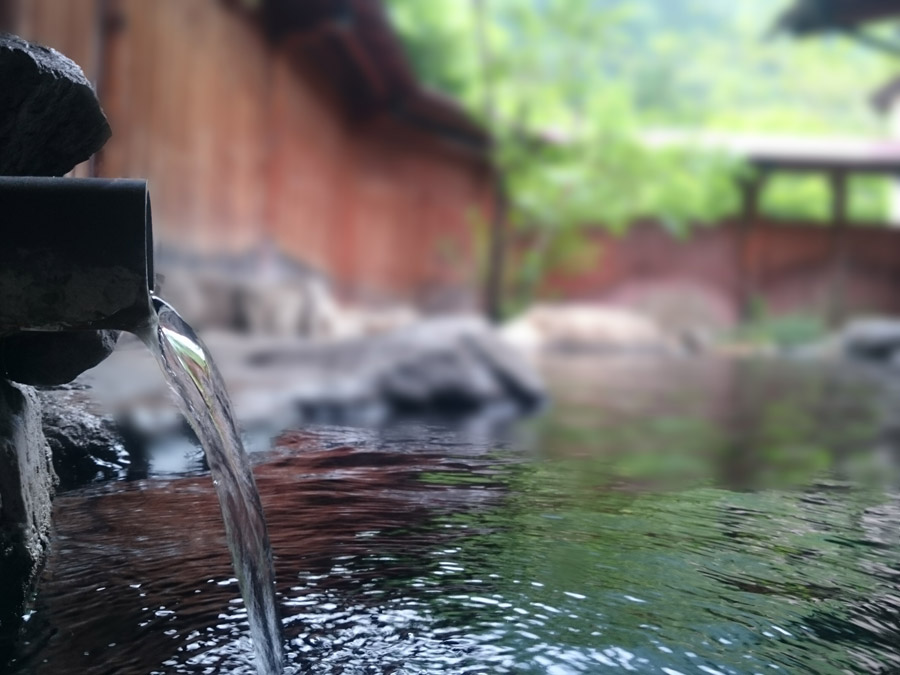
Onsen is often translated as "hot spring" in English. It is a bathing experience in which people soak in a tub of warm water. Especially in Japan, onsen refers to natural hot springs. The rain and snow that falls in Japan seeps into the ground and becomes groundwater, which is then heated by the heat of magma chamber to form hot springs. This warmed water is used as hot spring water that comes out of the ground or is pumped up to be used as hot spring water. Since there are many volcanoes in Japan and volcanic activity is very active, hot spring water is produced underground in many parts of Japan.
There is also a law called the "Onsen Law" which clearly defines onsen in Japan.
- The temperature must be 25 degrees Celsius or higher when it is collected from the hot spring source.
- it must contain at least one of the substances specified in the law.
Reference : JAPAN SPA ASSOCIATION HOT SPRING OF JAPAN
What is the difference between onsen and sento?
In Japan, there are also places called sento. Like onsen, sento is a public bathhouse, but the water used in sento is ordinary water. Sento is bathhouses that are used on a daily basis by local residents.
Why are Onsen so famous in Japan?
How did Onsen become so famous in Japan? Five reasons are listed here.
- Abundant Onsen Resources
- Shinto and Onsen
- Buddhism's encouragement of warm baths and development of hot springs
- Toji (湯治)
- Spreading as Tourism attraction
Abundant onsen resources
Environmentally, Japan is said to be a country rich in hot spring resources. There are many volcanoes and volcanic activity, as well as a large amount of annual precipitation, both of which contribute to the abundance of hot spring resources in Japan. The following is a map of the distribution of volcanoes, which shows the location of many volcanoes in Japan.
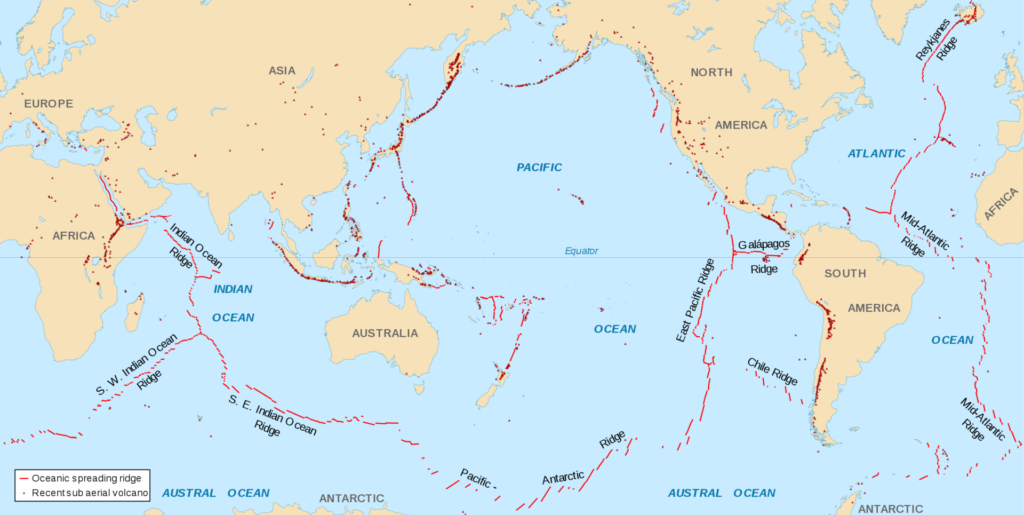
According to the Ministry of Land, Infrastructure, Transport and Tourism, the average annual rainfall in Japan was 1,718 mm between 1971 and 2000, which is about twice as much as the world average of 880 mm.
Shinto and Onsen
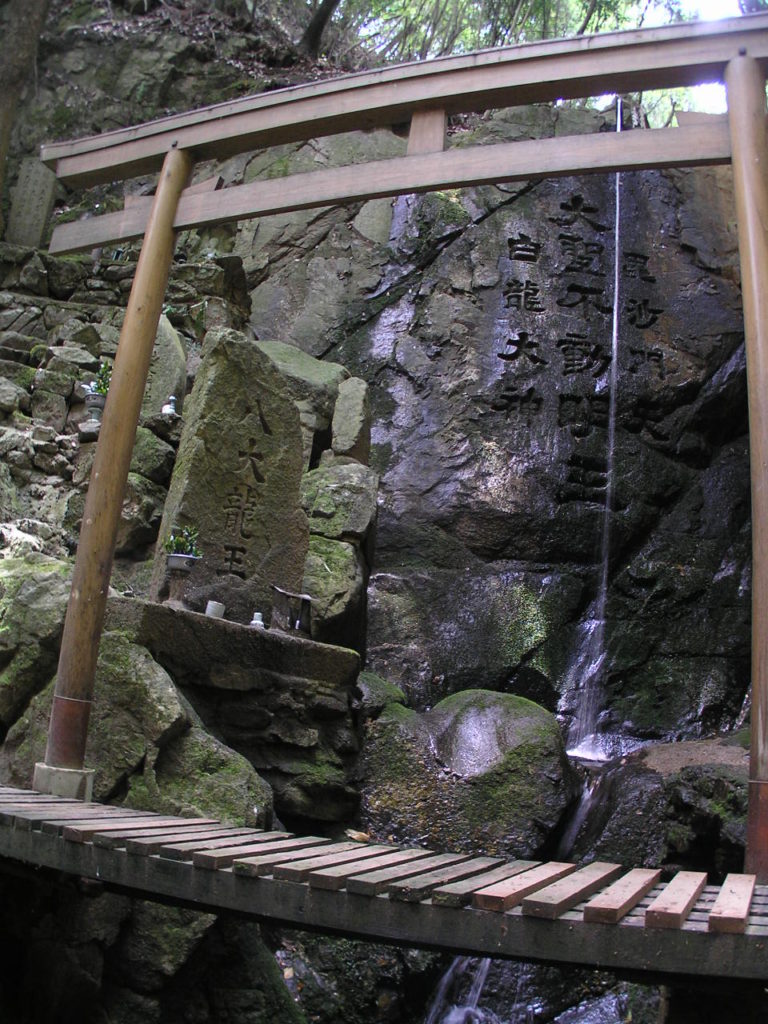
One of the reasons why hot springs have become so popular is because of the Shinto culture of misogi. In the Shinto religion, which is unique to Japan, both physical and spiritual defilements are called "kegare (穢れ)" and purifying oneself with water to remove Kegare is called "misogi(禊ぎ)". The ritual of misogi involves purifying the body and mind in cold river, waterfall, or ocean water.
-

-
Major Religion of Japan : Ancient Shinto, Shinto, and Buddhism
The main religions in Japan are said to be Shinto and Buddhism, but what exactly is Shinto? What is Shinto? Shinto is a indigenous religious beliefs and practices that emerged spontaneously from ancient times in Japan. There is a belief in the so-called "eight million kami": the sun kami for the sun, the water kami for water, the tree kami for trees, and so on.("eight million" is an example of a large number.) Also, the original beliefs do not have founders. There was no "holy book," the equivalent of the Bible in Christianity or the Koran in Islam. It is ...
続きを見る
The act of purifying oneself in Onsen is also called "yugori(湯垢離)". This suggests that Japanese people bathe in onsen not only to wash away the dirt from their bodies, but also to purify their minds.
Incidentally, when worshippers rinse their hands and mouths at temizuya (also called chozuya) in shrines and temples, they are purifying their minds. This is said to be a simplification of misogi.
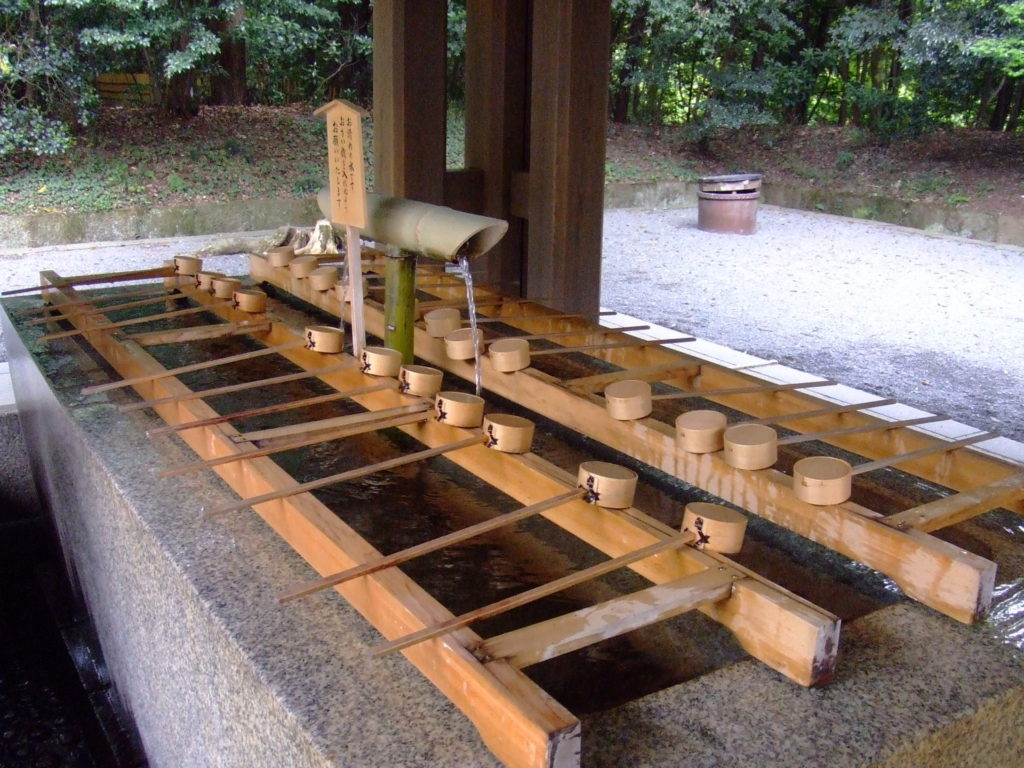
Buddhism's encouragement of warm baths and development of hot springs
Buddhism is said to have made a great contribution to the spread of hot springs.There was a Buddhist sutra called "Onshitsu Sutra(温室経)" that taught the merits of taking a hot bath, and the stura said that taking a hot bath would eliminate seven diseases and bring seven blessings. Originally, Shinto rituals of misogi involved purifying the body and mind with cold rivers, waterfalls, and ocean water, but hot water and hot springs felt good physically, so "Onshiitsu sutra(温室経)" was welcomed. This is the reason why people began to use hot water as a measure to purify themselves from Kegare during the cold winters in Japan.
The fusion of the Shinto spirit of "misogi" and the Buddhist "Onshiitsu sutra(温室経)" led to the birth of Japan's "soaking culture," or onsen culture, which washes and cleanses even the spiritual defilements.
It is also believed that mountain ascetics of the Shugendo(修験道) contributed to the discovery of onsen in Japan. According to the "Nihon Reijiki(日本霊異記)", En no Ozunu(役小角), the founder of the Shugendo sect, purified himself by bathing.
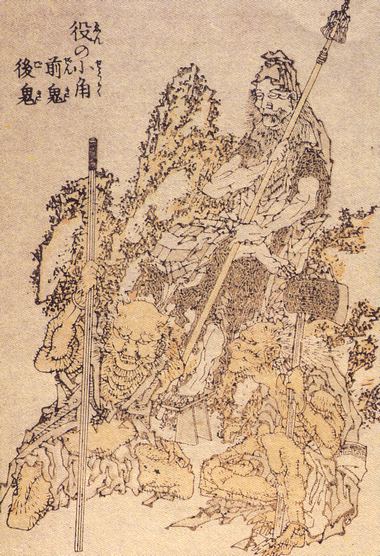
As ascetics roamed the mountains and forests, they also had a role to search for minerals, onsen and spring water. For these reasons, onsen were discovered in many places.
"温泉の日本史 記紀の古湯、武将の隠し湯、温泉番付" by Michio Ishikawa, The following are some of the onsen resorts that have a 1300 year old tradition of hot springs discovered by mountain ascetics.
- Yudagawa Onsen (Yamagata Prefecture),
- Yamashiro Onsen (Ishikawa Prefecture),
- Kinosaki Onsen (Hyogo Prefecture), etc.
Toji (湯治)
The term "Toji" refers to the treatment of illness and recovery of health through bathing in hot springs.In a time when medical care was not yet developed, hot springs were thought to have a therapeutic effect, which is why they became popular. Many records show that hot springs were popular among all classes of people, from emperors and the imperial family to nobles, priests, warriors, and commoners.
One example of the many records of hot spring cures that have been left in the past is the description in the Izumonokuni Fudoki. In the "Izumokuni Fudoki" (862-37), there is a description of the "Ideyu" (current Tamatsukuri Onsen) springing up along the riverside, which is said to be reputed as a "divine hot spring" because it cures illnesses.
During the Warring States period(1467 - 1615), Military commanders built hot springs in their territories to help their soldiers recover from wounds sustained in battle.
DSCF8228-1024x683.jpeg)
Spreading as Tourism attraction
Onsen spread as a therapeutic bath, but in the Meiji era (1868-1912), onsen began to spread as a tourist attraction. In the late Edo period (1603-1868), there were already some tourist attractions and souvenirs targeting bathers.
After the Meiji era (1868-1912), the development of transportation infrastructure and the media (such as the onsen guides published by the Ministry of Railways in the 1920s) led to the rapid spread of onsen. In the book, "温泉の日本史 記紀の古湯、武将の隠し湯、温泉番付" it is cited that the Meiji era saw a major shift in the availability of hot springs through artificial drilling (boring).
Reference: 世界平均の2倍、日本の降水量 日本流温泉の楽しみ 日本人と温泉 日本温泉文化史 湯治場としての温泉 Michio Ishikawa, "温泉の日本史 記紀の古湯、武将の隠し湯、温泉番付" (2018)

